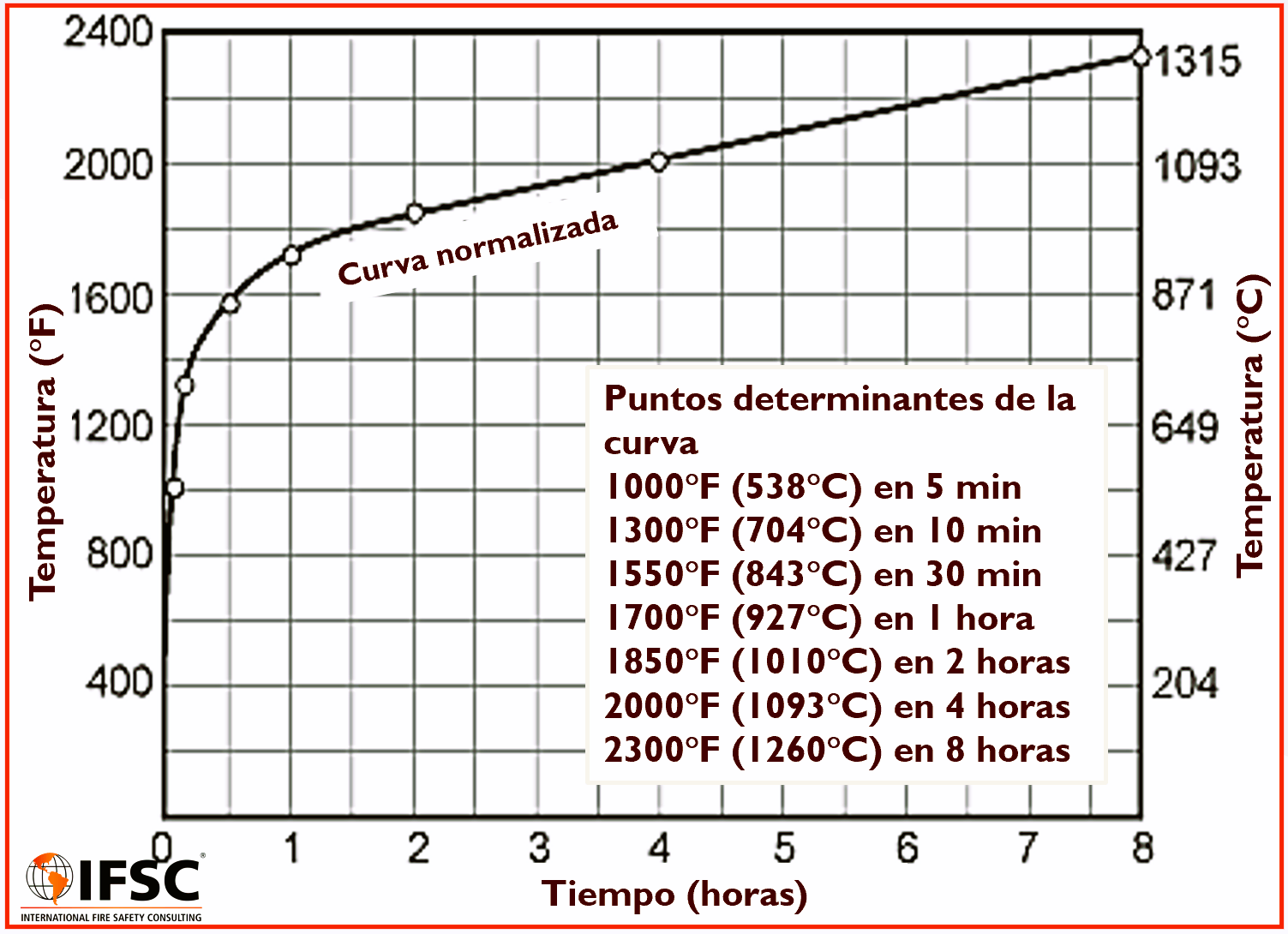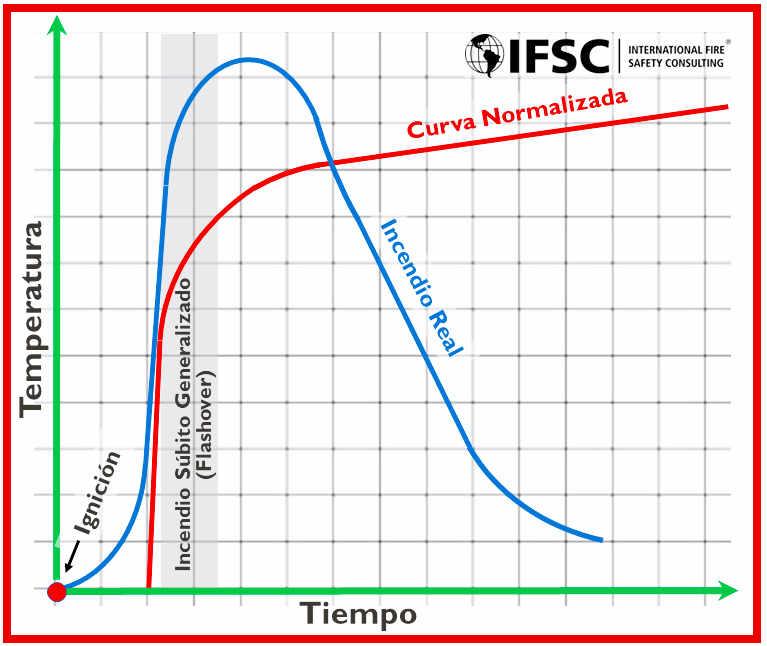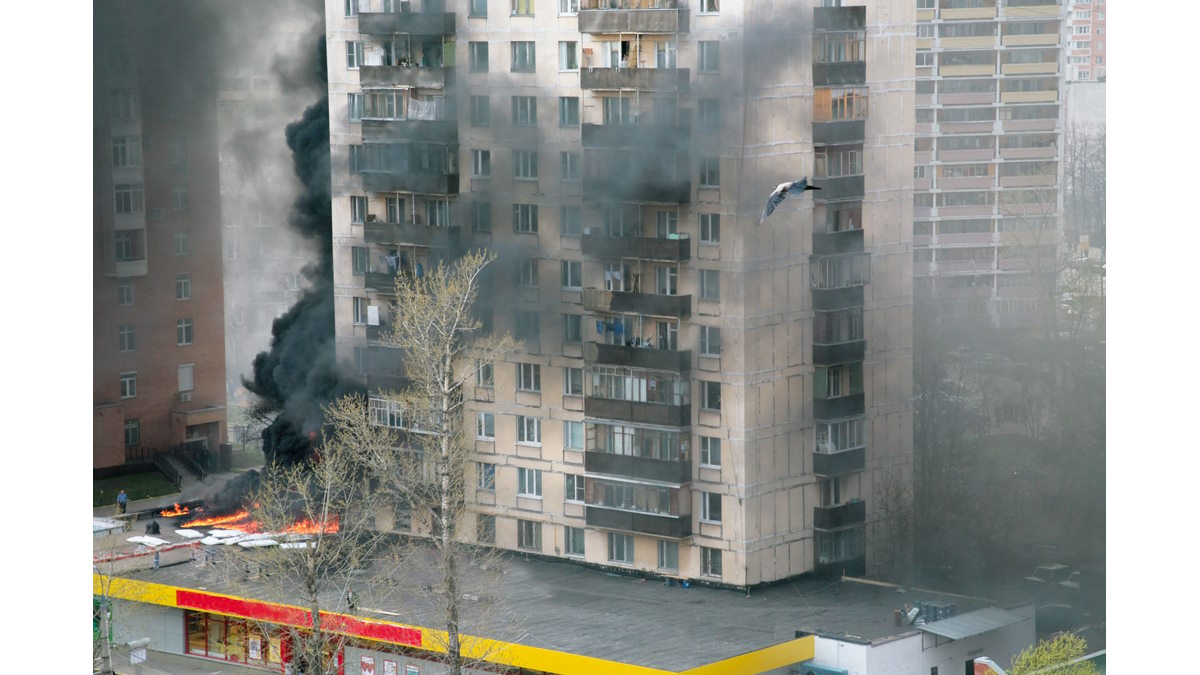Fire resistance is understood as the ability of a constructive element to maintain its properties in the presence of a fire for a certain time.
by Jaime A. Moncada*
In the NFPA Fire Protection Manual I wrote about fire resistance that "many aspects related to this topic are for us in Latin America concepts that we intuitively think are advantageous to our way of building. We still have a robust construction based on brick and concrete, which in most cases has significant fire resistance. On the other hand, we build relatively small buildings where traditionally we have not had major fire protection problems. However, the problem of fire protection in Latin America is focused on large buildings, buildings that we are increasingly building with open and novel architectures, with more exposed structural elements, with highly combustible interior finishes and copying the architecture of more developed countries, where there is a deep-rooted tradition of fire safety. That's where we're finding trouble."
In those countries where there is a more developed building code, minimum fire resistance requirements are established to help maintain structural integrity for the time necessary for the evacuation of the building and interior attack by firefighters.
Both the International Building Code (IBC) and NFPA 5000 define building construction types based on a certification of the fire resistance of structural elements. This fire resistance refers to the time, in minutes or hours, that materials have withstood exposure to fire as determined by specific tests.
A bit of history
The first fire protection engineering concepts that tried to quantify the severity of fires were about the impact fires had on the structural stability of buildings. One of the first tests on fire-resistant elements was carried out in an architects' club in London in 1790.
But it wasn't until a century later, after the Great Baltimore Fire in 1904, which was started by the collapse during fire in a 10-story building, that Columbia University in New York began to study the issue of how to test a building's fire resistance.

This is how the normalized time-temperature curve, which today is used almost identically worldwide, was devised (see the attached image). This time-temperature curve is regulated by ASTM E 119 and is very similar to its equivalent, ISO 834.
Fire or fire
Before continuing to talk about the subject of fire resistance in more detail we must define the word "fire", because it has two translations in Spanish, "fuego" and "incendio". Dictionaries define "fire" as the production of heat and light by combustion and "fire" as that of a large fire that destroys what should not be burned. This can be confusing and reflects our everyday language, where we tend to use these two words interchangeably.
But, strictly in fire protection, the word "fire" has a widespread use, with the exception of passive protections, where the word "fire" has a more entrenched use, such as fire elements, fire tests, fire resistance, etc. The best explanation I have found is that a "fire" is an uncontrolled fire, while a "fire" is a controlled fire. Think of the fireplace fire versus the wildfire.
Fire resistance
As I already mentioned, fire resistance is understood as the ability of a constructive element to maintain its properties in the presence of a fire for a certain time. This has sometimes been confused with fire severity, which is a function of the intensity and timing of the exposed fire. Although it makes sense to understand that the severity of a fire is related to fire resistance, this concept has lost its raison d'être and is considered obsolete.
Unfortunately in many of our countries, especially in the southern part of South America, the codes call for a building fire load study to establish the building's fire resistance.
This concept, however, since the 80s has been branded as obsolete, since the modern fire tends to have a much higher initial temperature than that shown in the normalized time-temperature curve, but tends to extinguish more quickly than what happened in fires 50 or more years ago, due to the much higher combustibility of the furniture and contents of modern buildings. The attached figure shows, in a conceptual way, the difference between the normalized time-temperature curve and a real fire.
How is the fire resistance of a structural element established? The fire resistance of the constructive elements is evaluated under three main criteria or parameters:
1. Maintain structural integrity, stability, or ability to withstand a load despite exposure to fire. In other words, avoid collapse during the fire.
2. Provide a physical barrier to restrict the spread of the fire and prevent the passage of flames.
3. Provide thermal insulation so that thermal transmission must be limited so that ignition of the unexposed surface or any material in the vicinity of that surface does not occur.
The most common way to establish the fire resistance of a constructive element is through a test in a fire resistance test furnace, such as the one shown in the attached photo. In this sense, the fire resistance of beams, columns, doors, wall sections, penetration protections and joints, etc., is determined by its performance in this furnace that is heated following the normalized time-temperature curve. These tests are designed for constructive elements where their fire resistance is usually determined in terms of "Fire Resistance" of 20 min, 30 min, 45 min, 1 hr, 1-1/2 hr, 2 hr, 3 hr and 4 hr.

These tests are typically performed by an independent fire testing laboratory, with Underwriters Laboratories (UL) being the best-known testing laboratory. In Latin America there are four testing laboratories: IPT in Brazil, INTI in Argentina, and two in Chile, IDIEM and DICTUC.
I reiterate that it is not valid for the manufacturer of the building element to certify his own product, which should be determined by one of these independent testing laboratories. However, for certain standardized elements, such as concrete, brick, rock board, wood, and metal structures with fire-resistant coatings, their fire resistance can be calculated using accepted empirical methods.
In this case, a fire protection engineering firm should evaluate the structural element and give its opinion on its equivalent fire resistance. The most commonly used standard is ASCE/SEI/SFPE 29. On the other hand, the Society of Fire Protection Engineers (SFPE) has published a manual documenting our understanding to date on structural performance in the event of fire.
As an additional comment I would like to mention that the area where fire inspectors should focus their attention, because it is where in my experience there are more problems in the buildings of our region, is the certification of doors, openings, penetrations and joints. These elements must come with an appropriate and independent certification and must be installed in accordance with the manufacturer's recommendations, as there is no empirical calculation method for this type of construction elements.
*How is the fire resistance that a building should have determined? Today the fire resistance that a building should have is established through an evaluation of its built area, number of floors, height and percentage of façade among others, depending on the occupation of the building. That is, a building with a riskier occupation, for example a hospital, with a construction area, number of floors and specific height, must be built with a structure with a higher fire resistance than that of a building with a less complex occupation, such as a commercial store, with the same constructive area, Number of floors and height.
The IBC or NFPA 5000 explains this in greater detail, where 9 to 10 different types of construction are established, depending on the code, for buildings. Again, these standards do not require an analysis of the building's fire load, as it is an outdated concept.
Interior finishes
Another important issue in fire protection is the reaction to fire, which is the contribution of a material, by its own decomposition, to the fire that is exposed. In this sense, interior finishes are classified according to tests that measure, for example, their flame propagation index and their smoke index developed for parade and ceiling coatings, and radiant flow for floors.
Although it makes perfect sense to limit the combustibility of a building's contents, this topic is difficult to assess in the absence of information about the reaction to fire of most of the finishes and furniture we use in Latin America.
 * Jaime A. Moncada, PE is a principal of International Fire Safety Consulting (IFSC), a fire protection engineering consulting firm based in Washington, DC. and with offices in Latin America. He is a fire protection engineer graduated from the University of Maryland, co-editor of the NFPA Fire Protection Handbook, Vice President of the Society of Fire Protection Engineers (SFPE). Mr. Moncada's email address is [email protected].
* Jaime A. Moncada, PE is a principal of International Fire Safety Consulting (IFSC), a fire protection engineering consulting firm based in Washington, DC. and with offices in Latin America. He is a fire protection engineer graduated from the University of Maryland, co-editor of the NFPA Fire Protection Handbook, Vice President of the Society of Fire Protection Engineers (SFPE). Mr. Moncada's email address is [email protected].


























Leave your comment